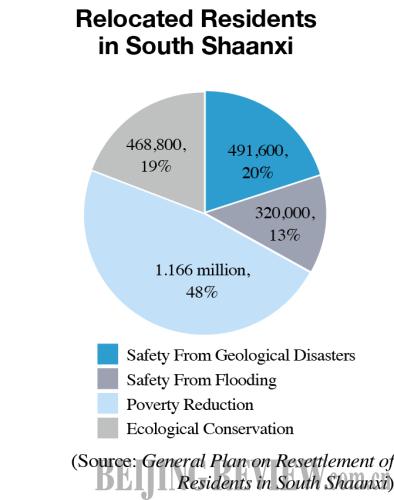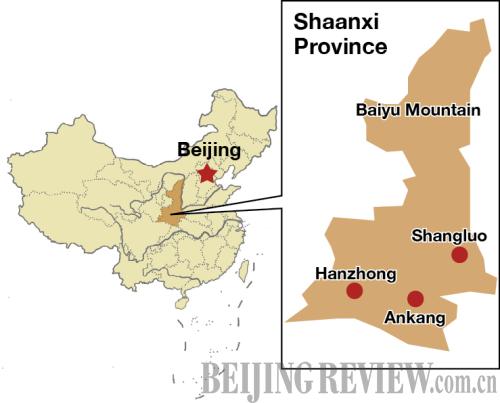|
 |
|
SMILING TO THE FUTURE: Villagers build the largest resettlement for migrants in Hanzhong City in Ningqiang County's Erdaohe Village on July 14 (LI DEHUA) |
According to Xie Haomin, Director of the Poverty-Relief Immigration Division of Shaanxi's Poverty Alleviation Development Office, people living in the Baiyu Mountain area with an annual income less than 1,500 yuan ($234) will soon be moved to more livable locations.
The government will support those being relocated by offering them vocational training programs and farming equipment.
"The government will respect the wishes of its citizens during the relocation process," Governor Zhao said.
Although Governor Zhao said he was confident the government would succeed in completing the resettlement program on schedule, he acknowledged it would not be easy.
Some scholars also cautioned there were many complex, long-term challenges ahead for such a huge and expensive program. Shortages of funds and farming and residential land for migrants are cited as major stumbling blocks. Without proper planning, it's feared the resettlement program may simply cause further suffering.
According to the provincial government's plan, some of those relocated will be moved to nearby cities and towns while others will be settled in specially constructed villages. Some residents will be given the option to find new housing on their own. The total area of new resettlements will exceed 10,000 hectares.
Such an enormous program will consume a massive amount of the province's land and financial resources.
However, half of south Shaanxi is prone to geological disasters, therefore only a very limited amount of "safe" land is available for accommodating migrants.
In Ankang, for example, only the city center and the county seats of Pingli and Hanyang have much flat land. "There is little even ground and virtually no room for further municipal development on any scale," said Wang Fuxiang, Deputy Director of Ankang's Bureau of Land Resources. He also warned the other seven county seats in the city, which are built on slopes or gullies, were "not just unsafe but extremely unsafe."
According to Ma Peijun, Director of the Geological Environment Monitoring Station at Lueyang's Department of Land and Resources, after the 8.0-magnitude Wenchuan earthquake in neighboring Sichuan Province in May 2008, the number of locations prone to natural disasters in Lueyang jumped from 229 to around 630 and the number of villagers requesting relocation also increased.
Even at present the county's land shortage is so acute that government offices cannot be relocated despite being threatened by potential geological hazards.
Meanwhile, Zhao Fasuo, Director of the Institute of Geology at Chang'an University in Xi'an, capital of Shaanxi Province, worries the massive relocation program will encounter the same problems experienced by a similar program in Ningqiang County in the province, where local residents were moved to an area that was later found to be prone to disasters.
"They did an evaluation and found the new settlement was only a little safer than the original location. You couldn't call it completely safe," Zhao said.
Wang is fully aware of the situation. "At best, we're moving from somewhere that will see a disaster every 10 years to somewhere that will see one every two or three decades," he said.
Finding suitable locations for resettling migrants is just the beginning. The cost of land acquisition as well as building houses and public infrastructure will be a big challenge.
Governor Zhao has pledged to minimize the burden on relocated households by raising funds from various channels, including securing financial support from the Central Government.
To raise capital for the program, the Shaanxi Provincial Government founded the South Shaanxi Migration and Settlement Engineering Co. Ltd. on May 6. Of the 6 billion yuan ($939 million) required for the first stage of relocation, 1 billion yuan ($157 million) will come from the provincial budget and 2 billion yuan ($313 million) from an investment by the Shaanxi Nonferrous Metals Holding Group. The remaining 3 billion yuan ($469 million) will be raised through bank loans.
"But besides the land and funding shortages, this program also faces the daunting task of supporting migrants' livelihoods for years after their resettlement.," said Mao Yanlong, a professor at Chang'an University's Geological Institute.


| 